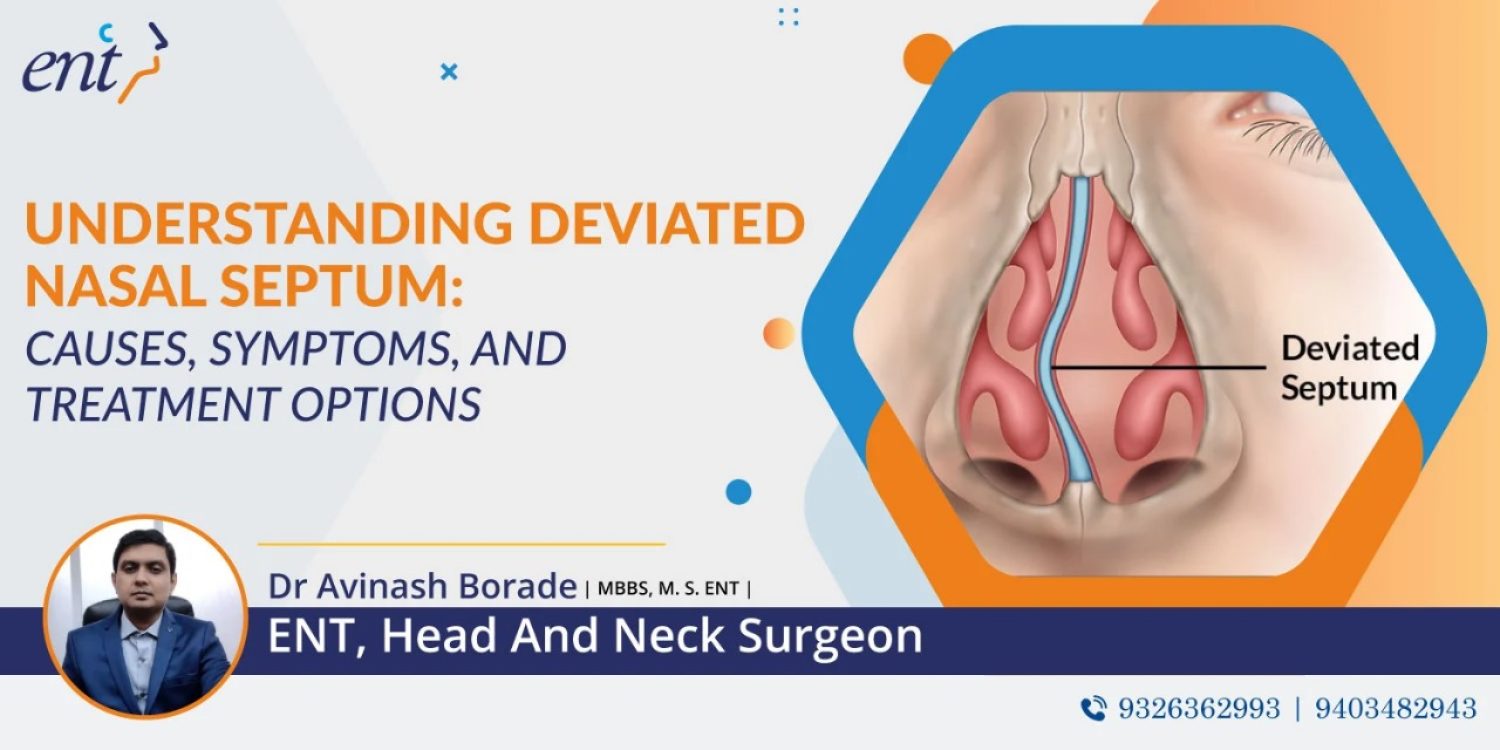Understanding Deviated Nasal Septum: Causes, Symptoms, and Treatment Options
A deviated septum refers to the misalignment of the bone that separates your nasal cavity. Most people are believed to have some misalignment, but if it’s severe, it can obstruct the airflow through your nose. This can cause breathing difficulties, bleeding from the swollen tissues lining your nasal cavity, and headaches.
An ENT surgeon in Navi Mumbai can diagnose a deviated nasal septum and recommend medications or a surgical procedure to align it in certain cases. Let’s examine the septum, its causes, symptoms, and the most suitable treatment.
Causes of Deviated Nasal Septum
The condition could be present at birth or occur due to a trauma to the nose. Here are the common causes.
A) Congenital Factors:
Deviated nasal septum can be a genetic condition in the child. If one or both of the parents have it, there’s a higher likelihood the offspring will have it, too. Or, the cartilage in the nasal cavity of the child could deviate due to the trauma during delivery.
B) Injury:
The septum can be displaced to one side due to an injury from an automobile accident or a trauma that occurs during sports.
C) Other Factors:
Aging can also cause changes in the structure of your nasal passage. Another factor contributing to a deviated nasal septum is an infection that obstructs your nose because of the narrowing of the nasal pathway.
Symptoms of Deviated Nasal Septum
Deviated nasal septum may not always cause serious symptoms, but if it’s a severe deformity or the bone leans excessively towards a particular side, you might experience the following symptoms:
- Obstructed nostrils, making it difficult to breathe through one nostril. This especially gets worse when you have a cold and allergies.
- Noisy breathing during sleep
- Nosebleeds
- Facial pain
- Headache
Diagnosis of Deviated Nasal Septum
Your healthcare provider will ask you questions about your symptoms, such as whether you have sleep disturbances at night, remain congested often, snore while sleeping, or have difficulty breathing. They may also perform a physical test using a nasal speculum, a device that gives a clear view of your nasal passage. The doctor applies a decongestant spray to examine your septum. It’s advisable to see an ENT specialist for an accurate diagnosis and proper treatment.
Treatment Options for Deviated Nasal Septum
The treatment depends on how severe the misalignment is and whether it causes major disturbances in your life. Medications often help in most cases, but endoscopic septoplasty surgery in Navi Mumbai is required if the symptoms are severe.
i) Non-surgical Treatments:
The best way to cope with a deviated nasal septum is to manage your symptoms using decongestants and antihistamines (if you have an allergy).
ii) Surgical Interventions:
Endoscopic septoplasty is a surgical repair of the deviated septum. It is the best option if you want permanent relief from breathing issues, nasal blockages, and headaches.
The surgery involves removing the parts of the septum and rearranging them so that they are in the center of your nose. It’s a minimally invasive procedure. You can expect healing within 1-2 weeks and can resume your routine activities within a month.













